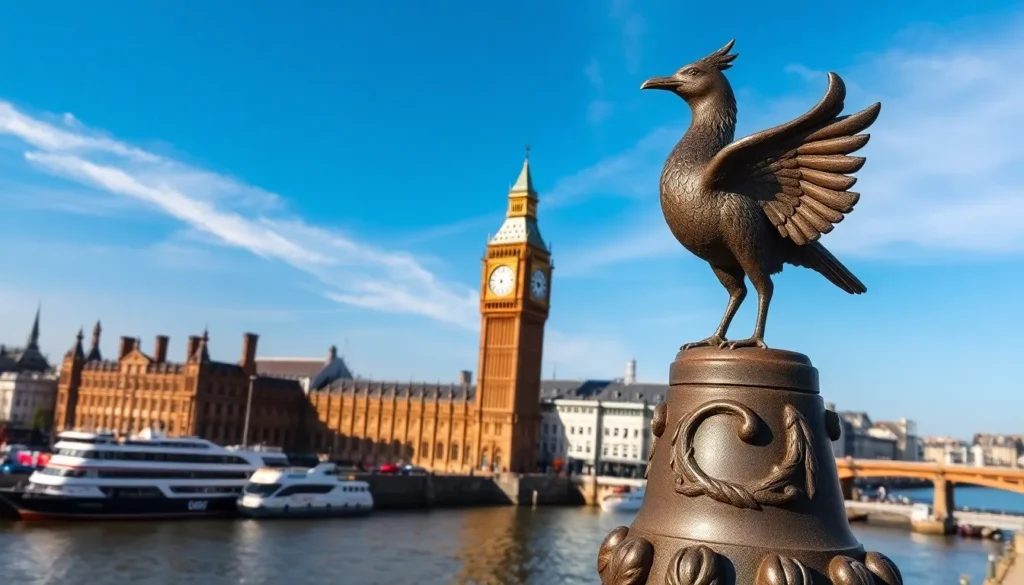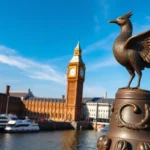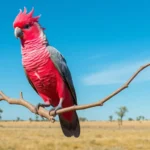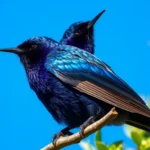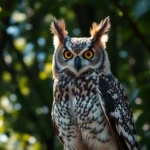When we think of mythical creatures that capture a city’s heart and soul, Liverpool’s legendary Liver Bird stands majestically above them all. These iconic bronze birds have watched over the Merseyside waterfront for over a century, becoming one of England’s most recognizable symbols and the proud emblem of Liverpool Football Club.
We’ve all seen these magnificent creatures perched atop the Royal Liver Building, but there’s so much more to their story than meets the eye. The Liver Birds aren’t just decorative sculptures – they’re steeped in fascinating folklore, local legends, and centuries of maritime tradition that shaped Liverpool’s identity as a major port city.
Whether you’re a Liverpool native, a football fan, or simply curious about British mythology, understanding the rich history and cultural significance of these remarkable birds will give you a deeper appreciation for one of the UK’s most beloved symbols. Let’s explore the captivating industry of Liverpool’s guardian birds and discover why they continue to inspire generations.
What Is the Liver Bird?
The Liver Bird stands as Liverpool’s most recognizable mythical creature, combining ancient folklore with modern civic pride. These legendary birds represent more than decorative elements—they embody centuries of maritime heritage and local identity.
Origins and Mythology
Ancient legends describe the Liver Bird as a cormorant-like creature that once inhabited the pools and marshlands of early Liverpool. Local folklore suggests these mythical birds protected sailors and fishermen who ventured into the treacherous waters of the Mersey River during the medieval period.
Historical records from the 13th century show the first documented use of a bird symbol on Liverpool’s official seal, though the creature’s exact species remained unclear for generations. Medieval storytellers wove tales of these protective spirits that would guide ships safely to harbor during storms and fog.
The name “Liver Bird” derives from the old English word “lifer,” meaning thick or muddy water—a direct reference to the marshy industry that characterized the area before urban development. Chronicles from the 1600s describe local residents claiming to spot these elusive birds near the waterfront, particularly during times of maritime danger.
Design and Symbolism
Liverpool’s coat of arms features the Liver Bird holding a sprig of seaweed in its beak, representing the city’s connection to the sea and its role as a major port. The bird’s wings spread wide in a protective stance, symbolizing the guardian role these creatures played in local maritime culture.
Modern interpretations of the Liver Bird incorporate elements from both cormorants and eagles, creating a unique hybrid design that distinguishes Liverpool’s symbol from other British civic emblems. The bronze sculptures atop the Royal Liver Building showcase detailed feather work and commanding postures that reflect the city’s maritime strength.
Symbolic meanings associated with the Liver Bird include:
- Protection – Guardian spirits watching over Liverpool’s inhabitants
- Navigation – Guiding vessels safely through dangerous waters
- Prosperity – Bringing good fortune to the city’s trade endeavors
- Identity – Unifying symbol connecting past and present generations
Cultural interpretations of the Liver Bird evolved throughout different historical periods, with Victorian artists emphasizing the creature’s noble characteristics while modern designers focus on its protective aspects. These symbolic representations continue to influence contemporary Liverpool architecture, sports team logos, and public art installations throughout the city.
History of the Liver Bird in Liverpool

The Liver Bird’s journey through Liverpool’s history spans over 800 years of documented existence. Our exploration of this mythical creature reveals how it transformed from medieval heraldic symbol to modern cultural icon.
Medieval Beginnings
Medieval Liverpool first adopted the bird symbol during the 13th century when King John granted the settlement its charter in 1207. Official town seals from this period display a cormorant-like figure perched above wavy lines representing the Mersey River. Church records from 1229 describe local fishermen invoking the “lifer bird” for protection during dangerous expeditions along the muddy waters.
Liverpool’s earliest coat of arms featured three birds positioned around a castle tower. These creatures served as guardians watching over merchant vessels entering the port. Monastery manuscripts from 1284 reference prayers offered to the protective spirits that resembled large water birds. Maritime guilds incorporated the bird imagery into their ceremonial banners during the late 1200s.
Town officials commissioned carved stone birds for St. Nicholas Church around 1361. Local craftsmen shaped these figures with outstretched wings and elongated necks characteristic of cormorants. Commercial documents from this era show merchants using bird-stamped seals to authenticate shipping contracts. The symbol gained prominence as Liverpool’s trading importance increased throughout the medieval period.
Evolution Through the Centuries
Renaissance artisans refined the Liver Bird’s appearance during the 1400s and 1500s. Sculptors began combining cormorant features with eagle characteristics to create a more majestic representation. Port Authority records from 1571 show the first official designation of the creature as “Liver Bird” rather than generic water fowl.
Georgian architects incorporated elaborate bird sculptures into civic buildings during the 1700s. The Town Hall construction in 1754 featured bronze birds positioned on the dome’s corners. Marine insurance companies adopted variations of the liver bird logo throughout this period. Ship captains reported sighting large birds near the harbor entrance as good omens for successful voyages.
Victorian era brought standardization to the Liver Bird design through official municipal regulations in 1797. Artists established exact proportions: wings measuring 12 feet across and bodies standing 8 feet tall for major installations. The Royal Liver Building’s construction in 1911 marked the pinnacle of Liver Bird symbolism. These iconic bronze sculptures weigh 1.5 tons each and stand 18 feet tall atop the 295-foot towers.
Modern interpretations emerged during the 20th century as Liverpool’s identity expanded beyond maritime trade. Football clubs incorporated stylized versions into their crests during the 1950s. Contemporary artists created abstract representations for public spaces throughout the 1980s and 1990s. Digital age adaptations now appear in video games, mobile applications, and social media platforms representing Liverpool’s global brand.
The Liver Bird’s Role in Liverpool’s Identity
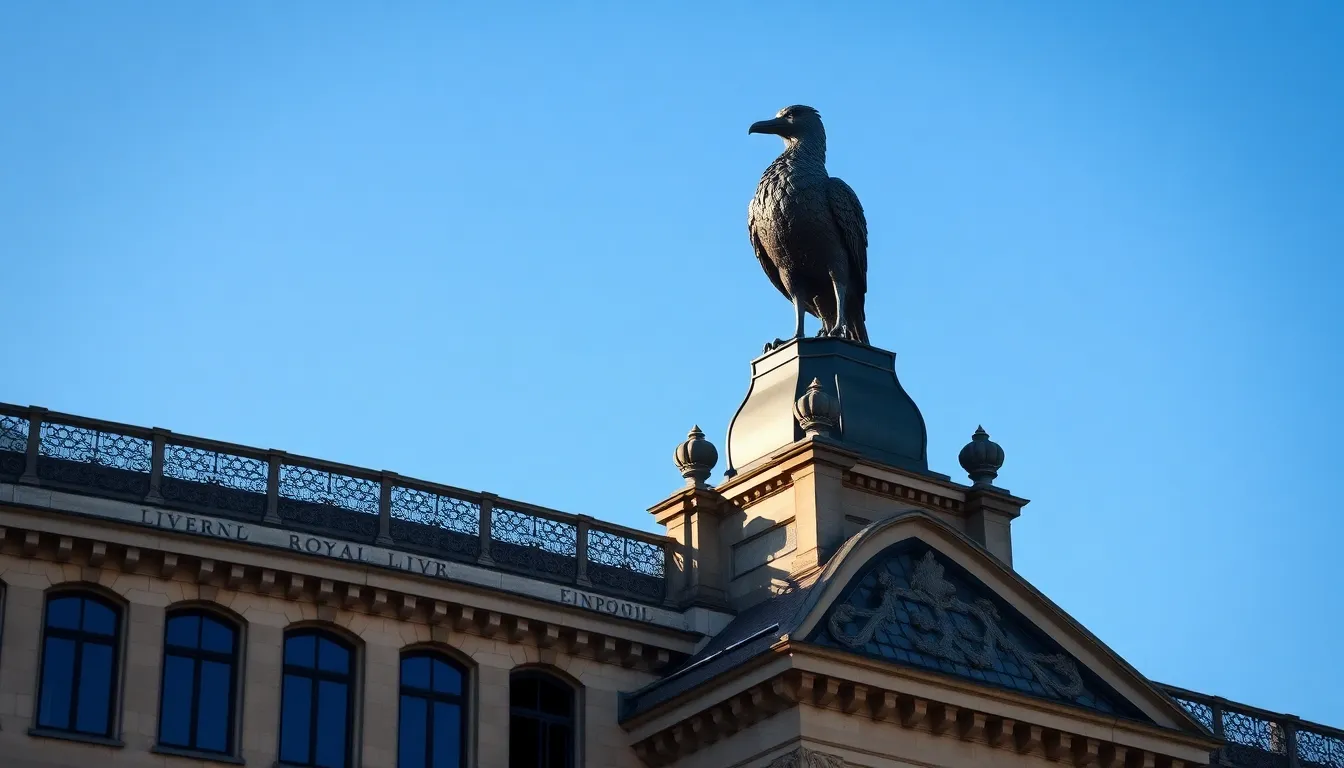
The Liver Bird transcends mere symbolic representation to become the fundamental element of Liverpool’s civic identity. Our city’s relationship with this mythical creature spans governmental recognition and cultural expression across multiple generations.
Official City Symbol
Liverpool’s official coat of arms prominently displays the Liver Bird as its central heraldic element, establishing its status as the city’s primary governmental symbol. We recognize this designation through the City Council’s formal adoption in 1797, when municipal authorities codified the bird’s representation in official documentation. The Liverpool City Council maintains strict guidelines for the symbol’s usage in governmental contexts, ensuring consistent representation across public buildings, official letterheads, and civic ceremonies.
Our municipal buildings showcase the Liver Bird through architectural elements, with the Royal Liver Building’s copper birds serving as the most prominent examples. These structures measure 18 feet in height and weigh approximately 1.76 tons each, making them among the largest civic symbols in the United Kingdom. The Cunard Building and Port of Liverpool Building also incorporate Liver Bird motifs, creating a unified governmental aesthetic along the waterfront.
Liverpool’s official seal features the Liver Bird holding seaweed, symbolizing our maritime heritage in legal documents and municipal transactions. We observe this symbol’s presence on mayoral chains, council chambers, and ceremonial artifacts that represent civic authority. The bird’s inclusion in passport stamps at Liverpool John Lennon Airport extends its official recognition to international contexts.
Cultural Significance
Liverpool’s cultural identity interweaves with the Liver Bird across music, literature, and artistic expression throughout our community. We witness this connection through local bands incorporating the symbol into album artwork, with groups like The Beatles and Echo & The Bunnymen referencing Liverpool’s avian emblem in their visual presentations. The Cavern Club displays Liver Bird imagery alongside historical photographs, connecting our musical heritage to civic symbolism.
Our football culture embraces the Liver Bird through Liverpool Football Club’s crest, where the symbol represents sporting excellence and community pride. Everton Football Club also acknowledges this shared heritage, with both teams’ supporters recognizing the bird’s broader significance beyond club rivalries. Match day celebrations feature Liver Bird merchandise, banners, and supporter chants that reference the mythical creature.
Local festivals and cultural events center around Liver Bird themes, particularly during Liverpool’s annual Heritage Open Days. We participate in artistic competitions featuring Liver Bird interpretations, from children’s drawings to professional sculptures displayed in public spaces. The Liverpool Biennial art festival regularly includes contemporary works that reimagine the traditional symbol for modern audiences.
Our educational institutions teach Liver Bird history as part of local studies curricula, ensuring younger generations understand their cultural inheritance. Primary schools organize projects where students create their own Liver Bird designs, connecting historical knowledge with creative expression. The Museum of Liverpool dedicates exhibition space to the symbol’s evolution, displaying artifacts and interactive displays that explain its cultural importance to over 600,000 annual visitors.
Famous Liver Bird Locations
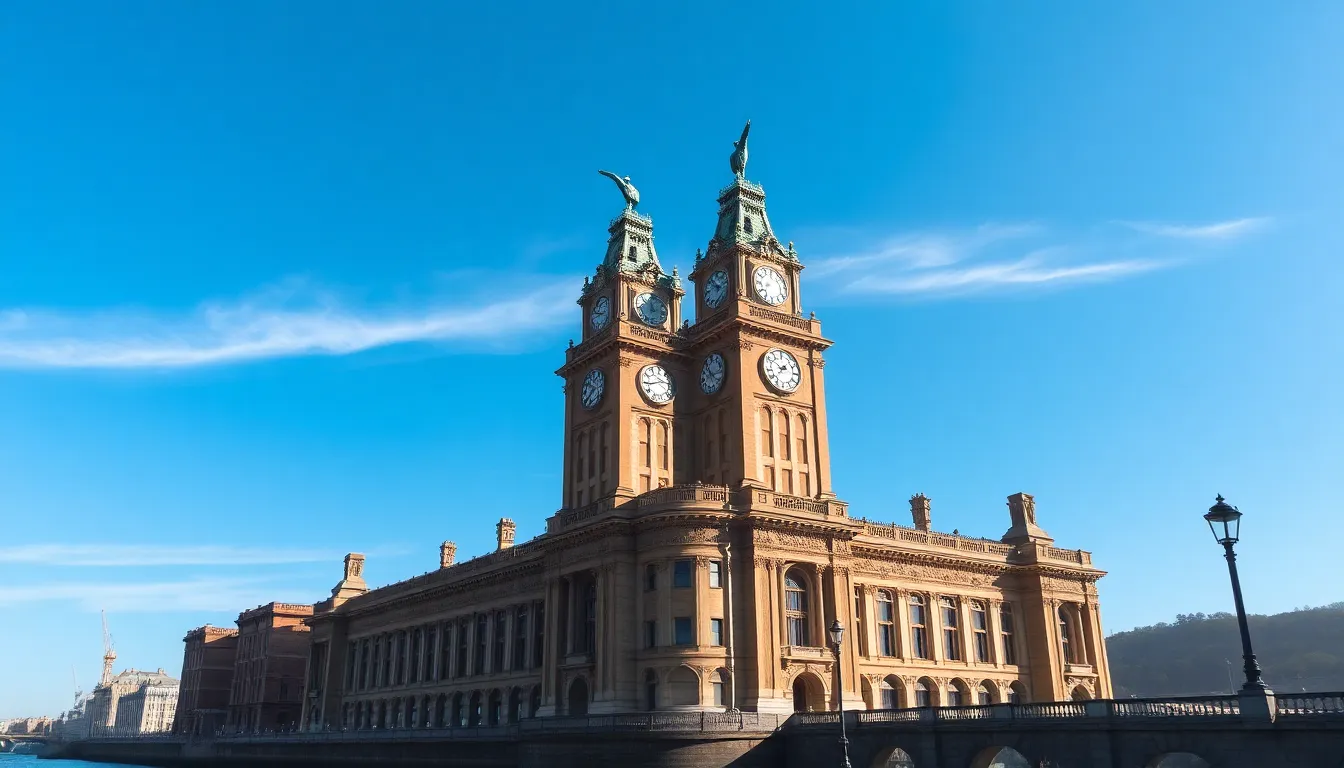
Liverpool’s most iconic symbol appears across multiple important locations throughout the city. These installations showcase the Liver Bird’s enduring presence in our urban industry.
Royal Liver Building
The Royal Liver Building houses Liverpool’s most famous Liver Bird installations atop its twin clock towers. Standing 295 feet above the Pier Head, these bronze sculptures measure 18 feet in height and weigh approximately 4 tons each. Edward Carter Preston designed these magnificent birds in 1911, creating the definitive representation that defines our city’s skyline.
Local legend states that the male bird on the Liver Building watches over the city while the female bird gazes out to sea, protecting sailors on their maritime journeys. The clock towers themselves rise 322 feet above street level, making the Liver Birds visible from miles across the Mersey River. During restoration work in 2018, conservators discovered original copper elements within the bronze structure, confirming the craftsmanship’s exceptional quality from over a century ago.
Liverpool Cathedral
Liverpool Cathedral features intricate Liver Bird carvings throughout its Gothic Revival architecture. The cathedral’s west entrance displays a prominent stone relief depicting the traditional Liver Bird design, completed during the building’s construction phase between 1904 and 1978. Master stonemasons incorporated the symbol into decorative friezes, window tracery, and memorial plaques within the cathedral’s interior.
Our city’s largest church contains over 200 individual Liver Bird representations across various architectural elements. The cathedral’s Lady Chapel houses a particularly detailed carving that shows the bird with outstretched wings, symbolizing protection over Liverpool’s faithful community. Visitors can observe these religious interpretations of our civic symbol during guided tours that highlight the building’s connection to local heritage.
Other Notable Sites
Albert Dock displays multiple Liver Bird installations across its historic warehouse complex, including cast iron decorative elements on lamp posts and building facades. The Cunard Building features carved stone Liver Birds on its exterior walls, representing the maritime trading heritage that connected Liverpool to global ports. Liverpool Town Hall incorporates the symbol into its Georgian architecture through weathervanes, door handles, and ceremonial chambers.
St. George’s Hall showcases bronze Liver Bird details on its neoclassical exterior, particularly visible on the building’s ornate lamp standards. The Walker Art Gallery houses several artistic interpretations of the Liver Bird in its permanent collection, including paintings from local artists spanning three centuries. Modern installations appear throughout the city center, with stainless steel sculptures at Liverpool ONE shopping district and mosaic representations in subway tunnels beneath Lime Street Station.
Liver Bird in Popular Culture
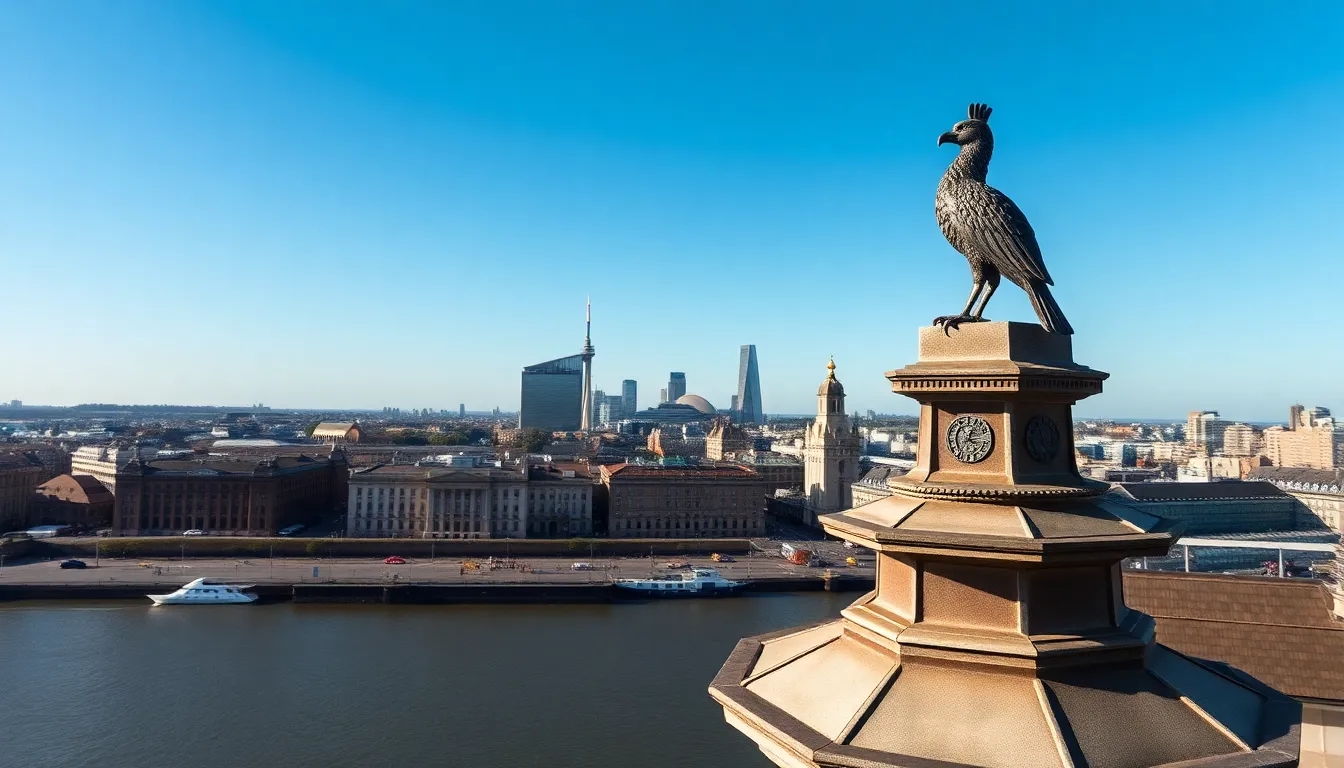
The Liver Bird transcends its historic and civic origins to become a powerful symbol across multiple entertainment and cultural mediums. Modern popular culture embraces this mythical creature as a recognizable emblem that connects Liverpool’s identity to global audiences.
Sports Teams and Mascots
Liverpool Football Club prominently features the Liver Bird on its official crest, making it one of the most recognizable symbols in international football. The club adopted the bird in 1955, replacing previous designs to create a stronger connection with the city’s heritage. Everton FC also incorporated Liver Bird elements in their historical crests, though they later transitioned to different imagery.
Local amateur football leagues throughout Merseyside display variations of the Liver Bird on team badges and uniforms. Liverpool FC’s merchandise featuring the Liver Bird generates millions in annual revenue, with replica jerseys sold in over 100 countries worldwide. The symbol appears on match programs, stadium signage, and promotional materials during Champions League and Premier League broadcasts.
Cricket clubs in Liverpool County incorporate simplified Liver Bird designs into their logos. Rugby teams like Liverpool St Helens RFC use stylized versions as secondary emblems. Youth sports organizations across Merseyside adopt the bird as a unifying symbol that represents local pride and sporting excellence.
Literature and Media
Contemporary British authors frequently reference the Liver Bird in novels set in Liverpool, using it as a literary device to establish setting and cultural context. Popular crime fiction series by authors like Kevin Sampson and Helen Walsh feature the bird as a recurring motif representing the city’s enduring spirit.
Television productions including BBC’s “Boys from the Blackstuff” and Channel 4’s “Brookside” incorporated Liver Bird imagery in opening sequences and set designs. Documentary filmmakers examining Liverpool’s social history use close-up shots of the Royal Liver Building’s bronze sculptures as establishing shots.
Music videos by Liverpool bands like The Beatles, Echo & the Bunnymen, and The Zutons showcase the Liver Bird in artistic interpretations. Album artwork from Merseyside musicians often features stylized versions of the creature. Local radio stations use Liver Bird sound effects and jingles as audio branding elements.
Video game developers include Liverpool landmarks featuring the Liver Bird in football simulation games like FIFA and Pro Evolution Soccer. Mobile applications focused on Liverpool tourism prominently display the bird in user interface designs. Social media platforms see thousands of Liver Bird-related posts annually from visitors and residents sharing cultural experiences.
Modern Interpretations and Artwork
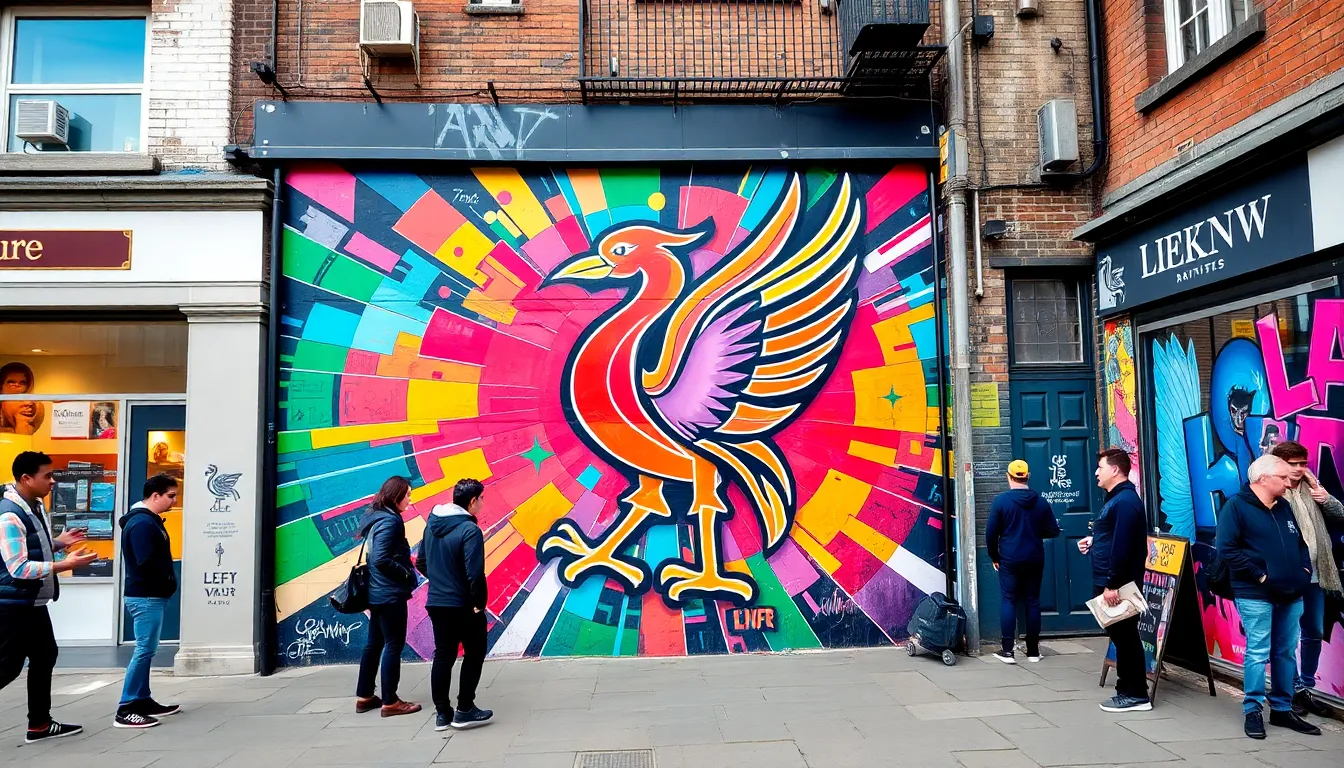
Contemporary artists across Liverpool have reimagined the Liver Bird through diverse creative mediums that extend beyond traditional bronze sculptures. Street murals throughout the city’s Northern Quarter showcase vibrant interpretations featuring neon colors and abstract geometric patterns that blend the mythical creature with modern urban aesthetics. Digital installations at Liverpool’s Baltic Creative Quarter present interactive Liver Bird projections that respond to visitor movements and ambient sounds.
Local sculptors create limited edition Liver Bird artworks using recycled materials from decommissioned ships that once navigated the Mersey. These eco-conscious pieces incorporate weathered metal, rope, and reclaimed wood to honor Liverpool’s maritime past while addressing contemporary environmental concerns. Art galleries in the Ropewalks district regularly exhibit contemporary Liver Bird paintings that combine traditional symbolism with modern artistic techniques including digital layering and mixed media approaches.
Educational institutions across Liverpool commission student artists to design innovative Liver Bird interpretations for campus installations. The Liverpool Institute for Performing Arts displays kinetic sculptures that feature moving wing mechanisms activated by wind sensors. John Moores University’s Art and Design School showcases annual exhibitions where emerging artists present Liver Bird creations using 3D printing technology, holographic displays, and augmented reality experiences.
Commercial venues throughout the city center incorporate stylized Liver Bird designs into their architectural facades and interior decorations. Modern restaurants feature minimalist Liver Bird silhouettes in their lighting fixtures and table settings. Contemporary hotels display abstract Liver Bird artwork in their lobbies that emphasize clean lines and metallic finishes rather than traditional bronze textures.
Fashion designers from Liverpool’s creative community produce clothing lines that feature modernized Liver Bird motifs integrated into streetwear collections. These designs replace classical heraldic elements with streamlined graphics suitable for contemporary urban fashion. Local jewelry artisans create Liver Bird pendants and brooches using sustainable materials including recycled silver and ethically sourced gemstones.
Conclusion
The Liver Bird stands as more than just Liverpool’s symbol – it’s a living testament to the city’s enduring spirit and maritime soul. From ancient legends protecting sailors to modern digital interpretations we’ve witnessed its remarkable journey through eight centuries of cultural evolution.
Today this mythical guardian continues to inspire artists writers and dreamers while maintaining its deep connection to Liverpool’s identity. Whether you’re exploring the Royal Liver Building or spotting contemporary street art the Liver Bird reminds us that some symbols transcend time.
We believe the Liver Bird’s legacy will continue growing as new generations discover its rich history and make it their own. Its wings still spread wide over Liverpool protecting the city’s past while embracing its future.
Frequently Asked Questions
What is the Liver Bird and why is it important to Liverpool?
The Liver Bird is Liverpool’s legendary mythical creature that symbolizes the city’s maritime heritage and cultural identity. This cormorant-like creature has protected sailors and fishermen for centuries, becoming Liverpool’s most recognizable symbol. It appears on the city’s coat of arms, official buildings, and represents over 800 years of local history and tradition.
Where does the name “Liver Bird” come from?
The name “Liver Bird” derives from the old English word “lifer,” which referred to the muddy waters of the Liverpool area before urban development. This etymology connects the creature directly to the geographical and historical characteristics of the region, emphasizing its deep roots in local heritage.
When was the Liver Bird first officially adopted by Liverpool?
The Liver Bird was first documented on Liverpool’s official seal in the 13th century, with the City Council formally adopting it as the city’s primary governmental symbol in 1797. The symbol evolved over 800 years from a medieval heraldic emblem to the modern cultural icon we recognize today.
Where can I see the famous Liver Bird sculptures in Liverpool?
The most famous Liver Bird sculptures are located atop the Royal Liver Building’s clock towers, featuring two iconic bronze birds symbolizing guardianship over land and sea. You can also find Liver Bird representations at Liverpool Cathedral, Albert Dock, the Cunard Building, St. George’s Hall, and throughout various locations in the city center.
How is the Liver Bird connected to Liverpool Football Club?
Liverpool Football Club adopted the Liver Bird as part of their official crest in 1955. The symbol has become globally recognized through the club’s international success, generating significant merchandise revenue and connecting the football team’s identity directly to the city’s cultural heritage and maritime traditions.
What does the Liver Bird symbolize in Liverpool’s coat of arms?
In Liverpool’s coat of arms, the Liver Bird holds a sprig of seaweed, representing the city’s strong maritime connection. The design combines elements from cormorants and eagles, creating a unique symbol that reflects Liverpool’s maritime strength, trading heritage, and protective guardianship over the waters.
How has the Liver Bird evolved in modern times?
Contemporary artists have reimagined the Liver Bird through street murals, digital installations, eco-conscious sculptures, and fashion designs. Modern interpretations blend traditional symbolism with current aesthetics, appearing in video games, social media, educational institutions, and commercial venues while maintaining its cultural significance.
What role does the Liver Bird play in Liverpool’s civic identity?
The Liver Bird serves as Liverpool’s primary governmental symbol, appearing on legal documents, municipal buildings, mayoral chains, and passport stamps. It’s deeply integrated into the city’s official functions and represents Liverpool’s authority and heritage in all formal civic matters and ceremonial occasions.

